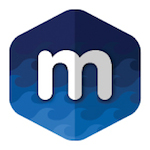
The learning analytics journey gets easier every day. Still, there are lots of challenges to overcome. Two particular problem areas spring up: Mindsets and organizational culture. Often, disinformation limits a teacher’s ability to leverage learning analytics. But previous experience from analytics can also be detrimental to its understanding, as top mind Elizabeth Dalton has warned for years. Translating a quantitative understanding of business processes to education is a non-trivial task, with room wide open for missteps. In short: Fostering a culture of learning analytics is a long and contextual practice.
MoodleNews 2016 In Review: The Learning Analytics Roadmap Traveled So Far
As a promising development, a new generation of quantification-friendly instructional designers is stepping up. Aided by cutting-edge, user-friendly open source tech, they reframe and myth-bust analytics. And in what it seems paradoxical, Google Analytics is an easy and safe choice to get started with. Sill Pontes, from the futuristic outpost of Curitiba, Brasil, explains. Director of TODRAW, a young, Moodle and H5P-based Instructional Design consultancy, she leads way in empowerment via analytics.
Google Analytics: GPS for the LMS?
It can be a surprise that Google Analytics ends up being a reliable ally in learning. Even for those without digital marketing experience. The tool is not intuitive, nor that appealing to the eye either. Other tools might be more relevant and pleasant, but this one has clear benefits:
- It’s already there. There is a high chance the site that hosts your LMS already has Analytics tied to it, and has been collected data, possible for years.
- It’s detailed. Under the maze of menu options hides a minutious forest of historical and live data.
- High availability of raw information. The system is independent from the site and it offers a high uptime. It also means you can access past data even in case of moving sites, and it will remain compatible.
- You can add third-party data to match. From country and device, to demographic trends, if you enjoy playing around with time series and pivot tables get ready for countless hours of data-poking.
Driving from a mindset to another, back and forth
How much of a coincidence is it that Pontes translates to “bridge”? For most of her life that’s been her job. To take people from one island of understanding onto another. When it comes to learning analytics, she has been aware of how hard it is for longer than she would admit.
With managers and local government officials, it’s tricky but in different ways. Accustomed to KPIs, they find it too easy to see learning in a very mechanical light. Need more education? Add more money, more time, more people. Reading numbers as a gospel, and ignoring them altogether are equally capital errors.
How to sort it out? By showing that analytics and learning are not different worlds, but territories of the same geography. The bridge is not one-way, but a permanent feature. She encourages teachers to travel back and forth as they wish.
«I begin by building a map, a pattern. At first I don’t know which one is the best path. But I make sure people can explore. I do have a basic set of expectations and required ‘checkpoints’ they should cross. Over time, I get more clear information. That allows me to design more precise routes and workflows.»
Working with teachers led her to understand the importance of having a “home.” It gives the roadmap a sense of direction, and eventually progress. “Now, I begin from pedagogical considerations. They are always rooted on a defined epistemology. Then we move forward under the guidance of developmental psychology theories. Analytics are means to an end, but the end is the ongoing learning process.”
A quantitative geography of learning — and the limits of guidance by Analytics
The geographical metaphor can be a powerful way to visualize things. A few years ago, a Latin American retailer launched a campaign for their travel services. A slogan translated more or less to: “No one can take what I’ve traveled away.” It might have been inspired by regional songs and expressions, which originally had “dance” as the operative verb.
The point stands. Once you realize how easy and useful it is to go from one mindset to another, you develop a liking for going further. To cross borders, and to return home as a more wholesome educator. You start wondering about how much more bridges you can cross, and the many experiences you’ll be looking forward to share with your learners.
Pontes opts for a tastier illustration. “Pizza,” she proclaims.
«You begin with a circle. It represents a macro understanding of what learning is and how it affects the world. Then you have to cut the pieces, and move forward, one bite at a time. In theory, going through all the pieces would lead you to the whole pizza.»
Except that taking on each slice takes a professional lifetime, or longer. Even if you have a global sense, being aware of every piece is a gargantuan task. Analytics can shed specific light over specific parts of the pie. And as more data from neighboring fields become available, you can reveal new pieces. But they will not complete the circle for you. Plus, attempting to measure every single nook is almost guaranteed to be overwhelming. “Especially if you go at it alone.” An environment that allows teachers to exchange, each from their unique vantage point, is one of the most promising starting points for a thriving culture of learning analytics, Pontes has learned.
The current and future roadmap, brought to you by algorithms?
Still in its early days, TODRAW has already secured a couple of high-profile customers from the Paraná state industry and government. Pontes shares with us general overview of the assignments.
- It starts with the teachers. A series of discussions set the projects pedagogical and developmental underpinnings.
- A series of workshops follow. Competencies often help in visualizing links between intervention and outcome. They also make it easier to ensure the Competency Framework aligns with the chosen educational theory.
- Then designers and teachers collaborate on course and content creation. Basic Google Analytics skills help define the user funnel. At this point it is safe for the tool to determine its structure.
- Let the learning begin! As the program advances, both Pontes and the teachers learn about the learning analytics tools, while gaining a better understading of the students and how they interact with content. Findings are likely to refine the process, or modify its structure, according to the client’s tolerance for radical change.
On the technology side, Moodle is the weapon of choice given the fondness for Open Source by Pontes. (Shared by the country’s EdTech communite alike.) But Google Analytics is LMS agnostic. H5P is another open source favorite. Its compatibility with xAPI and other web-based interaction protocols greatly simplifies the capture of student data. Some of the world-class Moodle developers, fellow Brazilians, have figured out how to made H5P run on the Moodle mobile app. (A prototype is available on the TODRAW Moodle site. Sign up from the Moodle app to try it, or become a TODRAW Android app beta tester.)
In one of TODRAW’s latest projects, Pontes is already exploring next-generation algorithms, as a way to better synthesize the vast amounts of data Google Analytics has put at everyone’s disposal. Moodle sites delivered by TODRAW feature a chatbot powered by Google’s Dialogflow language processing framework. (It is currently on a “training” stage.) The Analytics-Dialogflow mix, which among other things can create chatbots for any text or voice-based platform, has a groundbreaking potential for TODRAW’s learning, as well as its commercial prospects.
Open Learning Analytics Tools and news roundup
- Moodle Partner Catalyst IT has updated its Web Analytics plugin for Moodle. It simplifies the process of adding Google Analytics to a Moodle site. Another unofficial Google Analytics plugin was also released this year, by longtime Moodler Fred Woolard.
- Moodle HQ’s David Monllaó was an invited speaker to UNESCO Mobile Learning week, whose focus for 2019 was Artificial Intelligence. Monllaó showcased Moodle, which he deems “the de facto learning platform to facilitate research and experimentation with educational data.” Moodle is the LMS with the most scientific output associated, and that’s before scientists had access to its built-in predictions engine.
This is what I presented in UNESCO’s Mobile Learning Week: Moodle, the de facto learning platform to facilitate research and experimentation with educational data. https://t.co/oK8eq3qEMZ #moodle #moodledev #moodleresearch #mlw2019
— David Monllaó (@DavidMonllao) March 14, 2019
- On the top of Monllaó’s intervention, he updated Students at risk of missing assignment due dates. The plugin connects to the predictive engine in Moodle 3.4 or newer using Moodle’s Analytics API and signals student who are likely to miss their due dates, judging by historical data available.
- An interview with Blackboard‘s Learning Analytics and Research Director, John Whitmer, at Blackboard’s own magazine, packages and updates some previously reported discoveries from the giant’s Data Science team. Finding out that there is no correlation (LMS use and test performance in this case) is as insightful as finding one.
- Moodle Partner HowToMoodle and IntelliBoard have announced a partnership, allowing customers to enjoy analytics dashboard integration seamlessly. It is only the latest in a steady pace of partnerships for Moodle’s top analytics dashboard.
- Speaking of the only analytics-based Moodle Premium Integrator, IntelliBoard has updated the dashboard with more views, increased flexibility and performance. But without a doubt IntelliBoard’s most interesting highlight in years is LISA. The “Learning Intelligence Search Automation” borrows many lessons from Google Analytics, embedding a language processing for faster querying and report generation.
- The Society for Learning Analytics Research (SoLAR) invites academics to submit to next June’s Learning Analytics Summer Institute in Vigo, Spain.

 This Moodle Technology related post is made possible by: Moonami a company that provides a full range of Moodle services that combine the flexibility, scalability, and power of Amazon’s world-leading cloud platform (AWS) with fanatical Moodle support. Click here to learn more.
This Moodle Technology related post is made possible by: Moonami a company that provides a full range of Moodle services that combine the flexibility, scalability, and power of Amazon’s world-leading cloud platform (AWS) with fanatical Moodle support. Click here to learn more.

